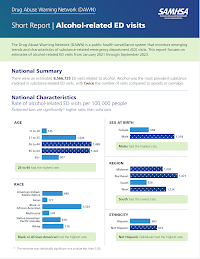Even low to moderate alcohol usage during pregnancy linked to birth abnormalities

Data from 281 patients pulled from three prospective cohort studies at the University of New Mexico examined the dose-response effects of mild-to-moderate prenatal alcohol exposure (PAE) and episodic binge drinking on perinatal outcomes. After adjusting for tobacco co-exposure and socio-demographic characteristics, mild-moderate PAE in periconceptional period and during pregnancy, including consumption of as little as ≤1 drink/week, was associated with reduced duration of gestation. Episodic binge drinking was associated with reduced gestation and birth length percentile. Ludmila N. Bakhireva, Xingya Ma, Alexandria Wiesel, Fiona E. Wohrer, Jared DiDomenico, Sandra W. Jacobson, Melissa H. Roberts. Dose–response effect of prenatal alcohol exposure on perinatal outcomes . Alcohol, Clinical and Experimental Research , 2024; DOI: 10.1111/acer.15284
